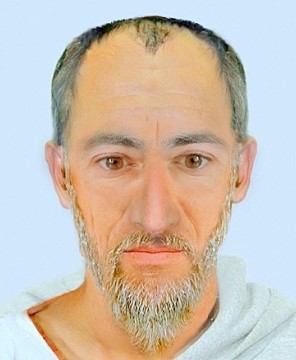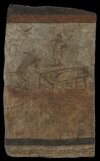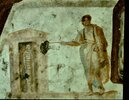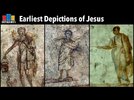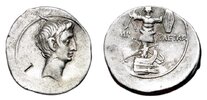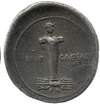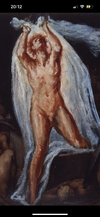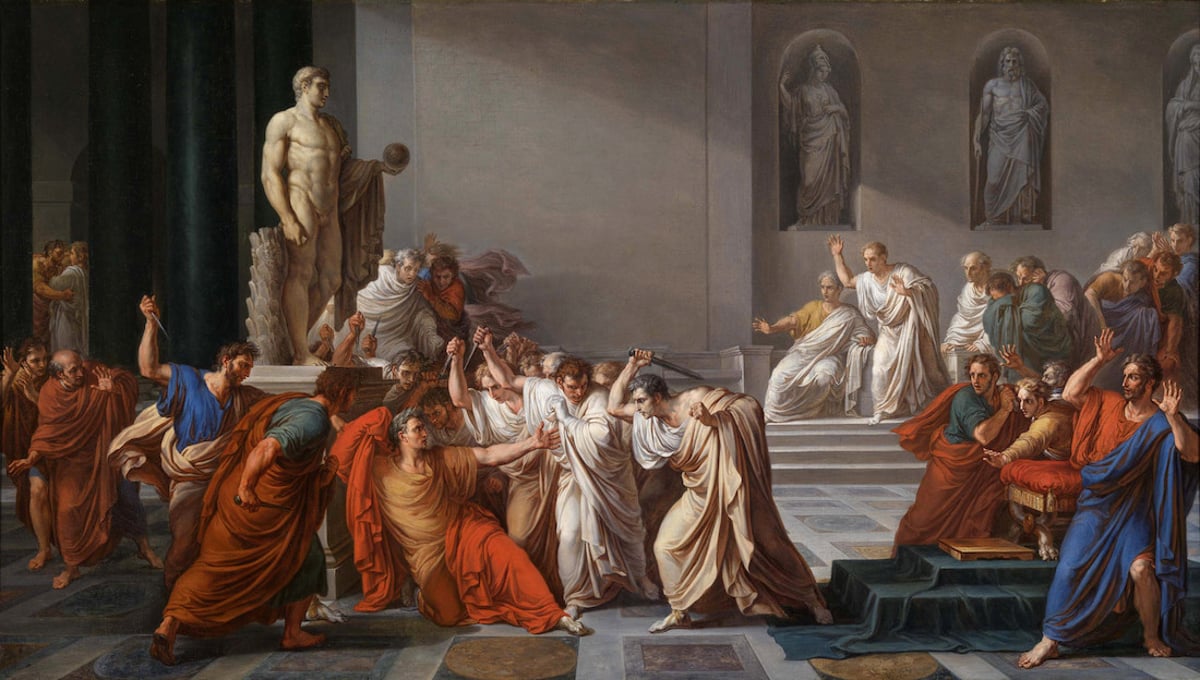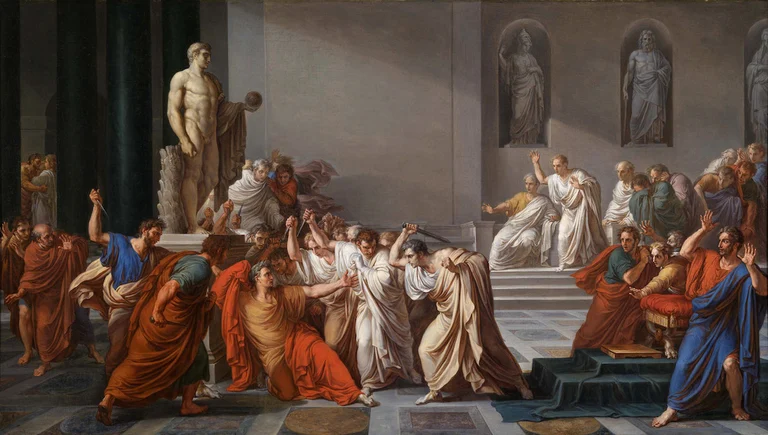The death of Julius Caesar, as depicted by Camuccini. In his just-published book, Conrad Black argues that Caesar, often depicted as intent on ending the Roman republic and installing himself as monarch, had no such ambition. Rather, he was the victim of jealous, petty and much less-accomplished men.Italian painter and lithographer Vincenzo Camuccini, 1798
Western Standard Guest Columnist
Published on :
09 Dec 2023, 6:30 am
The following is excerpted from Conrad Black's latest book, the first of three volumes entitled 'The Political and Strategic History of the World.'
There has always been a great deal of speculation about Julius Caesar’s view of his continuing role at the head of the Roman state including frequent suggestions that he could be tempted to assume the role of a monarch.
There is no evidence whatever that he considered anything of the kind or aspired to it and indeed had he aspired to it, he could easily have conferred it upon himself.
On the one occasion when it was publicly suggested by Mark Antony, Julius Caesar strenuously declined any such suggestion. There is no evidence he believed in hereditary monarchical rulership and all the evidence is that he believed in the radical reform of the Republic from his position as an ultimately long-serving dictator, somewhat like Sulla but clement, imaginative and untempted by the prospects of retirement.
Nor did Caesar have the slightest interest in the Hellenic monarchy.
He was familiar enough with the Greeks and a respecter of Greek culture and civilization, but did not consider it necessarily superior to that of the Romans.
In fact he thought its utility confined to the creation, as Alexander and others had foreseen, of a trans-national elite culture of civilization in Asia Minor, Egypt and to the east, a sort of Mandarinate, but absolutely nothing to displace the Latin language as the language of the world and the Roman Republic as modified by him as the preferable props and anchors of the mighty and ever-expanding Roman state.
As Pontifex Maximus, he was a reasonably diligent guardian of the state religion.
And he certainly demonstrated superstitions and religious proclivities that implied he gave that religion more than mere lip service, though he was in no sense pious and, as far as can be deduced, neither fervent nor particularly convinced of the efficacy of the complicated schedule of indulgences and extravagant conclusions derived from minor and dubiously relevant events.
But in these latter years, there was a continuous reference to Caesar as a partial or outright deity.
As uncertainty persisted over his political plans, increased honours were heaped upon him including terming out his dictatorship and proclaiming him to be dictator for life, with no evidence that he sought these honours other than the fact that he did not decline them.
The motives in attributing a quasi-deified status to Julius Caesar seemed to have been a combination of trying to elicit his ultimate ambitions, seeking his goodwill whatever those ambitions were and building resentment and suspicion against him because the very excess was sure to incite envy and the hostility of usurpation.
As Florus put it: “they decked him with fillets like a victim to the sacrifice.”
[1] It is not clear to what extent he was regarded as a deity while he lived but the Romans seem to have developed a special status of particularly inspiring people that retained them in the human fraternity while enhancing and enlightening them with at least moderately superhuman aptitudes for leadership, courage, intelligence, and felicity.
No fair-minded judge could withhold such distinction from Gaius Julius Caesar. There is no evidence that he sought any more than that or looked upon those who would push more upon him with anything more forthcoming than bemused indifference.
On the Ides of September 45BC, Caesar had made up a will which was deposited with the Vestal Virgins. Prior to the Civil War, Pompey, his son-in-law, was his heir.
The new will named Octavius, grandson of his younger sister Julia, as heir to three quarters of his estate. Other relatives ranked next and eventually came to Decimus Brutus and Mark Antony. At the end of the will Octavius was adopted as Caesar’s son. No mention is made of his son with Cleopatra and he remained married to Calpurnia with apparently continuing hope that she might bear him a son.
Caesar had undoubtedly seen good prospects for Octavius whom he kept close to him in the Spanish campaign and in his triumph, Octavius followed closely behind Caesar’s chariot and was made a patrician and a member of the pontifical College. Octavius was sent to pursue his studies at Apollonia until the time would come for him to begin his military apprenticeship, presumably in the coming Dacian and Parthian campaigns.
Octavius was going to be master of the horse for the remainder of the year 44 BC, succeeding Lepidus. From all of this it is clear Caesar had high hopes for Octavius, considered him his ablest possible heir and, in the event of anything befalling him, Octavius would be launched with every advantage to succeed to Caesar’s offices.
That he foresaw what an immensely talented and successful leader Augustus Octavian Caesar would become is not clear, but he did see him as the most promising successor available who should prevail despite the claims of Mark Antony and Lepidus should the succession to Caesar suddenly open up.
Readers are respectfully advised to ignore all intricate historical mind-reading by Suetonius and others trying to make a case for Caesar’s claim to royal or divine status, or his preference for constitutional offices such as the tribune, or to make something out of the exact designation of himself on Roman coinage.
All manner of theories can be elaborated but none of them holds water and there’s no evidence Caesar ever considered a royal option, much less the claptrap about divinity, though he certainly considered himself endowed with a greater aptitude to rule than anyone else that he knew of, with customary acknowledgment of the extraordinary gifts of Alexander.
Caesar did intend to refill the Senate and add to it respected and loyal representatives of all Italy and ultimately of other parts of the Roman world.
And after resettling the rabble in Rome around the Roman provinces, which they would help develop and Romanize while removing themselves from the turbulent political equations of the streets of Rome, he would stabilize the equal powers of the popular assembly with those of the Senate.
And at the summit of it, Gaius Julius Caesar, dictator, would rule. He would not meddle constantly nor weaken his powers by their excessive imposition. He would be clement and he would be moderate but when he wished to assert himself, he would do so at once and without argument or dissent.
The entire vast collection of fragments and impressions, intuitions and allegations, can be ransacked as they have been but they will not produce, after these thousands of years, any more evidence than we have long had that Caesar would rebalance the Senate with the popular assembly, reform the laws and their administration, broaden the electorate and the base of government, strengthen the Republic in every way and above all strengthen it by his presence as dictator for as long as he wished followed by at least the intermittent dictatorship of his grandnephew and adopted son Octavius Caesar.
It could be claimed Caesar’s position was merely the logical round-up of the precedents set by the three principal soldier-statesmen who had preceded him.
Marius rolled up a succession of seven consulships and Sulla became dictator while retaining the consulship and Pompey became a sole consul while delegating entire responsibility for a single imperium or event.
After his Spanish campaign, the Senate offered him a right to nominate the holders of the great offices of state, but he contented himself with recommending people to the Senate from time to time.
Illustrative of Caesar’s refusal to take these matters too seriously was his nomination on the last day of the year 45 BC, when the consul Quintus Fabius died and Caesar named a consul for the last hours of the year, causing a tremendous flood of bitter reproach from Cicero who accused Caesar of bringing the Senate and the consulship into disrepute as positions of ridicule.
There is no evidence Caesar intended any such thing but there seems to be reason to think he didn’t think much about the Senate at all.
It was galling for exceptional men such as Cicero and even more the silence of great aristocratic houses with centuries of patriotic background to fester in Caesar’s anterooms or address their concerns to the new men who buzzed around Caesar’s presence in these years.
Caesar was generally very polite and respectful but there were occasional incidents such as when the Patres filed in to announce to him in early 44 BC a new grant of honour and he failed to stand at their approach.
But this was the depth to which these matters had descended: the supposedly great men of the Senate contemplated assassination over trivial matters of protocol. Caesar should have had some more emollient advisers to deal with the hyper-sensitive, but failure to do so is scarcely a capital offense.
John Wilkes Booth and Lee Harvey Oswald, in their lunacy and wickedness, were more substantially motivated than Brutus and Cassius.
The Ides of March
Where the breach seemed to open up between Caesar and the traditionalists was in the increasing evidence that Caesar, as he allegedly said, considered that: “The Republic has become a form without substance.”
He had been dictator but abdicated on becoming consul for 48 BC; he was made dictator again after Pharsalus and was slow to surrender it and then his friends conferred the office for ten years.
Only three of the years had passed when his friends voted in the Senate that he should be dictator for life. They did him a bad turn, perhaps deliberately and perhaps not, but he compounded it when, as his coins illustrate, he accepted that offer.
This vast deposit of powers for life in the hands of Caesar in the absence of an emergency caused any constitutionalist to regard Caesar, however great his services and his ability, as a tyrant.
It was inevitable that many people in the Senate and other government circles would see Caesar’s dictatorship as the end of traditional government and yet all that was needed to restore that government was to remove the dictator, as he showed no disposition to remove himself.
Gradually, and in keeping with the well-known human habit of believing what one wishes to believe, those offended or threatened by the vast powers of Julius Caesar came to see themselves as defenders of a governmental system of everybody associated with the anti-tyrannical storied history of Republican Rome.
And gradually they saw the removal of the one human obstacle to the restoration of that grossly over-romanticized era and entity as a deliberate and benign act.
Caesar’s enemies grew in numbers, righteousness and in delusional notions of the just and beneficial act they were contemplating, while Caesar, who was fearless always, even facing desperate odds against his mere physical survival, could not take seriously, even if he was dimly aware of, the schoolboys’ scheming and ludicrous moralizing over the brutal and cowardly murder of the greatest and most talented leader, with a doffing of the laurel to Alexander the Great alone, that the Mediterranean world had ever known.
We cannot know to what extent Caesar realized that he was in some danger. Presumably, had he known, he would have taken greater precautions, but he was so unwaveringly courageous he might have considered precautions cowardly. It was revealing when he said, of his practice of clemency, “I wish for nothing more than that I should be like myself and they (his opponents), themselves.”
He may have found it difficult to realize how blind those envious of him could be in not seeing the services he might yet render to the Roman state.
Whatever his thoughts, he had granted a general amnesty though obviously defeat still rankled with his ungrateful enemies. The Senate had voted him sacrosanct and the senators had bound themselves by an oath to protect him.
He dismissed the Spanish horsemen that had been his military bodyguard and he moved freely about the city in apparent confidence and security. “If he was to be treated as a tyrant, he would not suffer the tyrant’s punishment to live in fear.”
[2]
It is impossible to guess when the actual plotting against Caesar began but it must certainly have been underway throughout the hectic early weeks of 44 BC as Caesar prepared to depart for the Parthian expedition.
People such as Trebonius and Decimus Brutus owed a great deal to Caesar yet plotted his death. The decision of the conspirators not to attack Antony was probably an effort to use him to silence Caesar’s following by elevating him into a post-Caesar junta of joint leadership. But no such proposal ever materialized.
To kill anyone except the tyrant turned a sacrifice into an assassination — there’s no evidence that any of them gave a moment’s thought to the eighteen-year-old Octavius Caesar.
There has been a good deal of speculation Caesar was about to stage a coup to make himself king just before he departed for Parthia. But this must be nonsense; as Napoleon, a thoroughly qualified judge of these matters, would point out, the eve of a prolonged departure to a distant place “is not the moment to subvert the Constitution.”
[3]
There was a series of incidents: a diadem was placed on the statue of Caesar and was removed by the tribunes. As the dictator was returning on January 26, 44 BC from celebrating the Latin festival, the cry “Rex!” was raised and Caesar replied: “I am not Rex but Caesar,”
[4] which did not assuage opinion. Romans believed the king’s role usurped the rights of the people; the notion of constitutional monarchy had not arisen.
When these tribunes claimed their freedom of action had been infringed, Caesar had them removed. Three weeks later, Antony offered Caesar a diadem which he ostentatiously refused before dedicating it to Jupiter Capitolinus, the only king of the Roman people.
In the last days suspicion arose because of a priestly finding that the Sibylline books revealed if Parthia was to be conquered, it would be by a Roman King.
Caesar thus came under pressure to cancel his expedition to Parthia which was out of the question. But this absurd incident rippled around Rome inciting further dark suspicions. Caesar’s patience with this homicidal hysteria was formidable and indeed excessive. His solution to the Sibylline problem was that, if necessary, he would invade Parthia as a king of one of Rome’s Asian provinces but would return to Rome the dictator of the Republic. This led to further febrile anxiety that Caesar planned to move the capital of the Roman world to Alexandria or Ilium.
Caesar was not entirely blameless in the horrible tragedy that was about to occur. He could easily have divided the conspirators and satisfied most of them that what he planned to do was reform and strengthen the Republic and not much interfere in the normal workings of the state.
And he should have arrested a couple of the conspirators and shaken the plot down, and he should certainly have retained his full security unit. That he did not do any of these things indicates he was prepared for another test of wills, for that is what he considered most conflict to be and he was right to believe that he normally would win such a test. But he should not have submitted himself or Rome to such a roll of the dice.
Caesar attended the Senate on March 15, 44 BC, was approached by sixty of his colleagues all with daggers hidden under their togas and they mercilessly assaulted and stabbed him to death.
He allegedly uttered the famous “Et tu Brute?” (to a man he had endlessly helped, forgiven and befriended) and gathered part of his cloak over his head “that he might die decorously. And great Caesar fell,” at the foot of the statue to Pompey. (It is not clear he reproached Brutus, and if he did, it was probably in Greek: “Kai Su Teknon” (“Even you, Young man?”)
Suetonius, one-hundred and fifty years later, contradicted the rumour of this utterance and Shakespeare changed it to Latin for the convenience of his Sixteenth Century English audiences.
No man has ever been so determined to impose his will on others and no man has been so gifted by nature for the achievement of his purpose.
Alexander alone in antiquity rivals Caesar in the range and speed of his exploits. It was inevitable he should be compared with Alexander because of his victories and because of his death cut off as he was in the plenitude of his power as was Alexander in the midst of his days.
Yet the likeness between them belongs to rhetoric rather than to history… The Greek ideas of Alexander were new ideas, the ideas of the unity of mankind. Caesar was a Roman aristocrat, steeped in the Roman tradition of reasonable, calculated, but inflexible domination, the belief in power, rather than conquest in the extension of Rome to the Romanized, in steady progress but in continuity of policy.”
[5]
This is the standard summary of Julius Caesar by British historians. The Germans rarely draw conclusions from their learned ancient chronicles, and the French tend to be more generous.
To the British there was some grievous limitation in the civic virtue of Caesar, some transgression in his vast ambitions causing them to fall short of the pursuit of an ideal of government.
It was as if he had let down Dr. Arnold’s side in a cricket match. The British historians have been seduced by the rubbish of the noble Republic, which had been attempting to commit suicide since it squandered its armies fifty years before and left all Italy defenseless against the Cimbri and Teutons and cast itself at the feet of seven-fold Consul, General Gaius Marius, as the first of the four military saviours (Sulla, Pompey, Caesar).
[6]
Having bought into and largely confected the myth of the virtuous republic, British historians, including Gibbon, consigned Caesar to mere Bonapartism, conflating their customary libels of Napoleon into the contemporary equation.
Shakespeare himself, the sublime playwright and Bard of Avon, propagated some of this and also Plutarch’s nonsense about Caesar’s madness, but Shakespeare was a dramatist, not a historian.
The simple facts are: Caesar vastly expanded the Roman world, stabilized its institutions and was in the act of reforming them and his clemency and even-tempered self-confidence were rewarded with the most gratuitously brutal assassination in the history of the world apart from the murder of Jesus Christ.
His enemies were not worthy continuators of a great tradition; they were a wretched gang of self-deluded back-stabbers and cowards, who panicked into treason and murder out of nervosity at proximity to such greatness as the inscrutable Caesar.
And Alexander the Great’s Hellenizing vision was indeed magnificent, but it failed almost completely and led to a fifty-year tri-continental bloodbath (Chapters 14 and 15). Caesar’s Rome grew and spread and ruled for nearly five-hundred years more.
Caesar’s murderers represented a Republic that had never existed and when the dim facsimile of it which they and their immediate forebears had fumbled out of existence was retrieved, they treacherously murdered the redeemer lest he succeed in the objective — the creation of a mighty functioning republic, whose absence, they claimed, justified their treachery.
Cassius, who had betrayed Crassus at Carrhae, and deserted Caesar for Pompey and been pardoned, ran from the Senate holding up two bloody daggers and shouting to a crowd attending a nearby sporting festivity that they had murdered the tyrant. He expected popular acclaim. Cicero, who knew of the plot but kept some distance from it, wrote with self-gratification of Caesar’s murder as if anyone could conceive that such a monstrous crime could be a constructive event in the history of a serious Republic.
The murderers momentarily imagined that Cassius had caught the public mood and that they would be hailed as liberators. Caesar’s corpse was removed with dignity by his followers. It was clear from the beginning that the masses of Rome despised the murderers.
In leaving Mark Antony and Lepidus untouched they had ensured the swift rise of a party of vengeance. The deserts of the assassins would be swift and terrible; they may barely have had time for some nostalgia for Caesar’s clemency.
Gaius Julius Caesar’s greatest triumph was yet to come. Octavius Caesar returned from Apollonia and it was revealed that he was Caesar’s heir; he would complete Caesar’s work.
He was the man to end the Civil and Social Wars, to reform the Republic and enfold it in an Empire, to launch the great Roman enterprise upward to new heights, to synthesize peoples and regimes somewhat as Alexander had hoped, and not just to avenge Caesar but to put that mighty name over the whole earth and water of the known world in unchallenged and momentarily tranquil glory.
For nearly sixty years, Octavius Augustus Caesar would rule benignly and successfully, in the most masterly and seamless succession in the history of government. As after the return from Spain and Caesar’s immense triumph, in which he allowed Octavius to share, the prolonged triumph of Augustus would very much be Julius Caesar’s supreme victory also.
[1] Suetonius. Divus Julius, 42, 1.
[2] CAH, IX, p. 735 (F.E. Adcock).
[3] Ibid., p. 736.
[4] Ibid.
[5] Ibid., p. 739.
[6] Even here there was an element of continuity and political legitimacy, as Caesar was the nephew of Marius, the great grandson-in-law of Sulla (via his second wife Pompeia), and the father-in-law of Pompey, as well as the great uncle and adoptive father of Octavian: one-hundred and twenty years of Roman government.
www.q-mag.org
